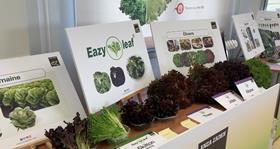
Enza Zaden showcased its new concepts and innovations in leafy vegetables at its annual Winter Leafy Days fortnight, which took place last month at the company’s research centre in Cartagena, Murcia.
The event, which drew customers from all over the world, was held almost entirely online due to the pandemic.
“By tradition, this is the perfect time of year to welcome customers to our Winter Leafy Days in Spain,” said Jean François Thomin, marketing manager for Enza Zaden in Northern Europe.
“For producers in southern Europe, the end of the season is approaching, while for those in the north it is the time when they are preparing to select the varieties of their next crops.”
Matthias Keiper, sales manager for lettuce, endive and spinach crops in Germany, said the showcase exceeded expectations.
“Throughout the week I was in contact with a much higher number of clients than usual, some of whom cannot attend each year because they come from very distant countries like Australia,” he said.
Keiper noted that demo days provide an ideal opportunity for the company to speak with its customer base on a variety of topics and gain crucial feedback.
“During the digital event, we also enjoyed the opportunity to spend more time with each client and to gather more information about the market in general.
Outlining the concepts that guide research into new varieties, Víctor Segura, crop breeding manager of leaf crops, explained: “We have three pillars. First of all, our new varieties contain the genes that provide resistance to the main diseases and reduce the cost of inputs for producers.
“By supplying products with stronger genetics, we decrease the use of chemicals and the need for water, which is beneficial for both human health and the environment.
“Second, we seek to create more practical and convenient products. Our crops must bring benefits to producers, especially with regard to the automation of processes, from sowing to transport through harvesting and packaging. In addition, with retailers and consumers in mind, products must be well preserved and taste good.
“And last but not least, we must offer a wide assortment of products in order to meet the demand of each link in the chain. Everyone needs something different, and our desire is to satisfy them without exception.”
Segura acknowledged that plant breeding is a long process, which requires anticipating trends five or six years in advance.
“Therefore, we always start from our three pillars, but we also collect useful information from other sources,” he said.
“For example, producers are in contact with supermarkets and help us to highlight the qualities of our products.”



